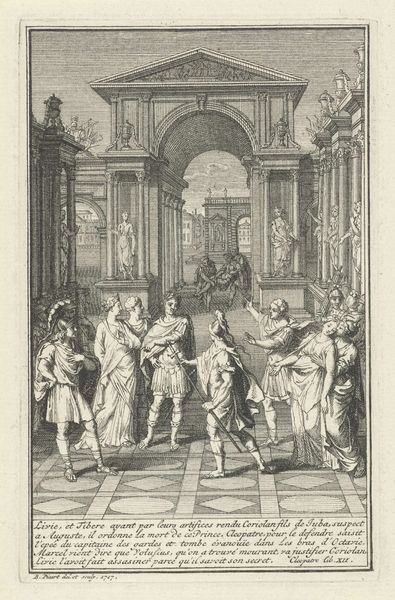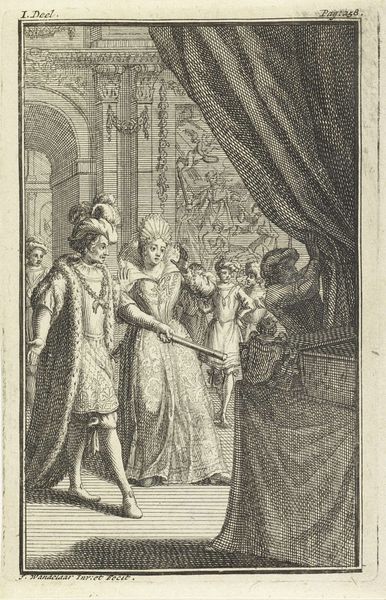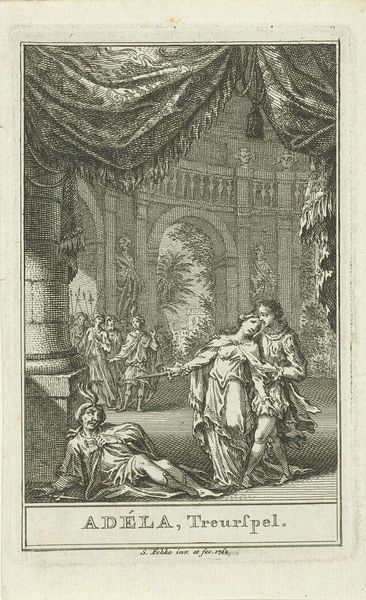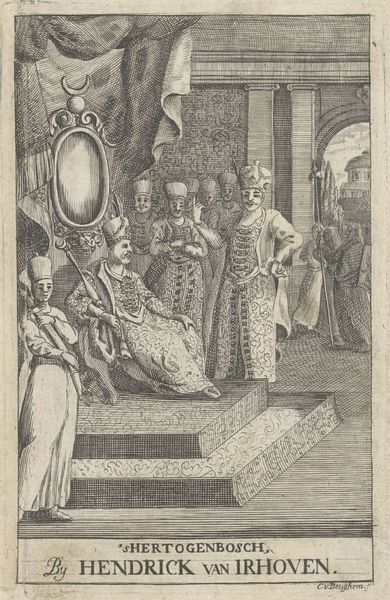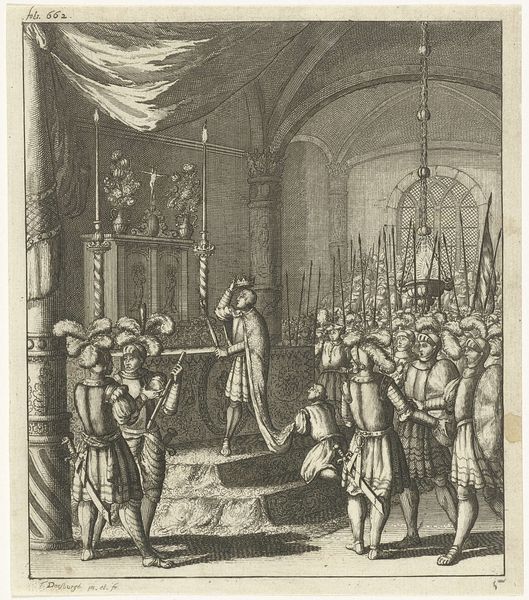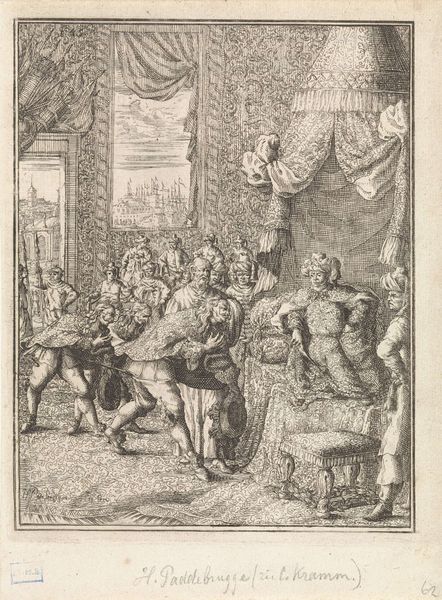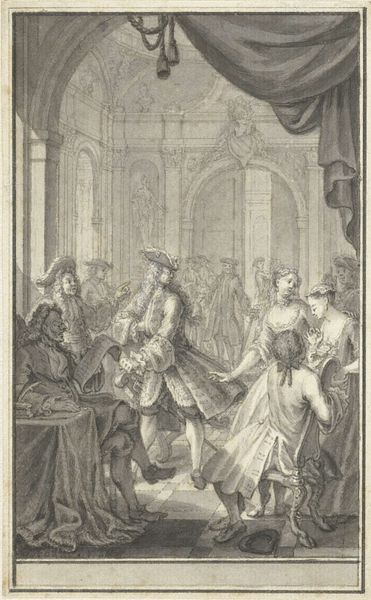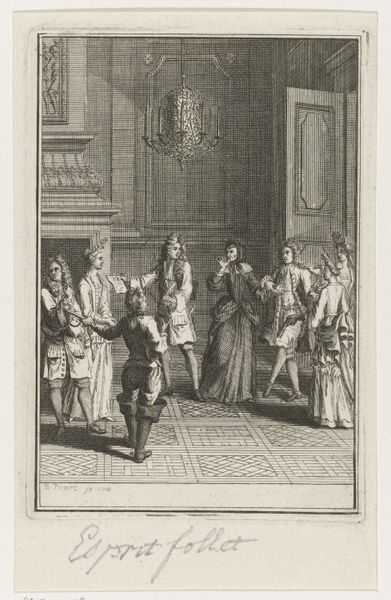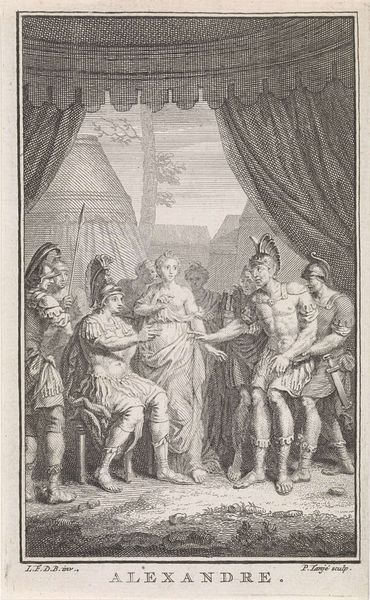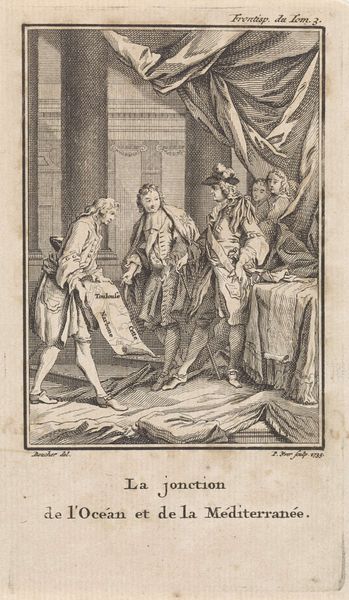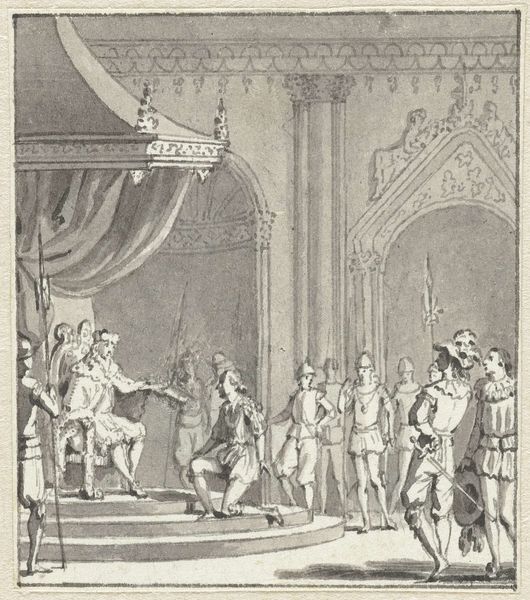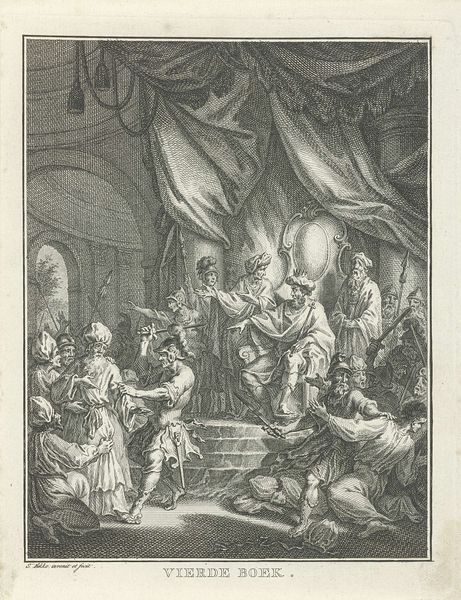
engraving
#
baroque
#
figuration
#
line
#
history-painting
#
engraving
Dimensions: height 135 mm, width 88 mm
Copyright: Rijks Museum: Open Domain
Curator: Jan Wandelaar created this engraving, titled "Vrouw knielt voor een voornaam gezelschap," around 1722 or 1723. Editor: My first impression is of formality, but also starkness. It’s all so rigidly composed, rendered with these very precise, almost severe lines. Curator: The artist employed line as the primary means to structure space and to define form in this baroque work. What can we deduce from its configuration of the image? Editor: Well, I notice immediately how much effort has gone into creating these gradations and textural differences solely through line. Look at the draped curtain compared to the flat, geometric tile floor, it is quite elaborate for an engraving. Curator: Indeed. The medium of engraving, particularly its dissemination through printed images, speaks to the broader accessibility of information during this period. Note how Wandelaar carefully modeled clothing, not just rendering surfaces, but revealing depth and weight. Editor: And I’m intrigued by the story being told. The prostrate woman, likely a commoner, contrasted with the ornamented, powerful figures behind her. Engraving allowed for the wide circulation of such socio-political narratives to wider audiences, I suppose? Curator: Exactly. It’s history painting in miniature, designed for dissemination. Consider how line becomes a powerful tool not only for aesthetic pleasure but also for representing a societal hierarchy, its lines etching out not just shapes but also power dynamics. Editor: But it's also intriguing to think about the production of these prints—the artisan translating the initial design to a matrix to create many identical images...laborious but efficient. It makes you consider the value assigned to art and its audience. Curator: Precisely, and how this piece operates within both artistic and historical contexts. There’s so much to unpack just in its form and material choices. Editor: Indeed. And the stark clarity offered by these deliberate lines pushes viewers to think critically about the material conditions and narrative constructs within.
Comments
No comments
Be the first to comment and join the conversation on the ultimate creative platform.
